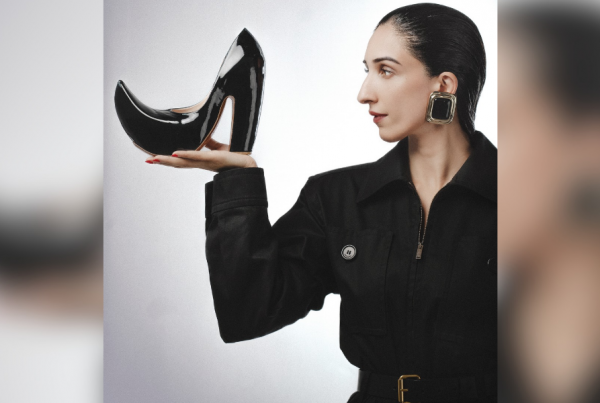This week Mawra Hocane, who’s picking up a lot of praise for her performance in drama serial Sabat, styled her bandhani print suit with an olive-green silk dupatta that flaunted speckles of white. The stylish actress complimented this traditional outfit with silver, floral patterned jhumkis and a hand crafted pair of light golden mojris/khussaas embellished with white beadwork. To top off her classic attire, she tied her hair back in a tight bun with a suggestive side parting swirl, and finished the look with a dash of youthful bubblegum pink lipstick, peach nail paint and a hint of mascara. We loved the look!
What you need to know about bandhej or bandhini:
The word bandhani is derived from the verb ‘bandhna’, which means to tie. A tie and dye technique that may have originated accidentally, has now evolved into an art, meticulously perfected by dyers who create intricate patterns, plucking it by hand into many tiny knots which when unraveled, form white flawless figurative designs.
The antiquity of bandhani dates back to the Indus Valley Civilization and was later re-introduced in Jamnagar, in the state of Gujarat during the city’s foundation around 400 years ago in the Indian subcontinent. Bandhej colours are also a significant part of the daily life in the state of Rajasthan and are found in its bustling bazaars, festivals, fairs, cultural costumes and in state paintings and murals.
The name given to each white bandhej pattern is according to the shapes that they form. Some of the ones spotted on this particular suit are dungar-shahi (the mountain-pattern on the dupatta’s lower end); kodi (tear shaped ones on the neckline), boond (small dot with a dark center prominent throughout). Other patterns present on the kurta include tikunthi for circles and squares in a group of three, chaubasi for four and satbandi for a cluster of seven.

Bandhini today
Eons may have passed, but the bandhani print and tie-dyed fabric has survived through the ages despite the rapid changing clothing trends. Many patterns in fashion get replaced, lost or forgotten but bandhani has adapted to modernity and has remained relevant across generations. Bandhani is not limited to just kurtas or chunris; it has made its way to digital prints on tops, women’s lehngas, saris and even men’s shirts and turbans. The craft may be meticulous and time consuming, but textile manufacturers have successfully come up with short cuts by creating the bandhini effect in print. This Cross Stitch outfit that Mawra is wearing is certainly an example of a bandhini print done right.
Note:
Bandhani suits, sarees and dupattas are in vogue this summer and provide a refreshing change from machine made garments and mass produced prints. Bandhani silhouettes on kurtas can be worn with matching or contrasting coloured pants, churidaars, and even Balochi shalwars.
Trending bandhani colours to uplift your mood during lockdown are: turquoise, popping purple, Kutch red, magenta and Sindhari yellow.
Quick Tip:
Choose a solid coloured, plain and light shaded kurta that may be buried in your closet, carefully pair it with a deeply dyed bandhani dupatta in any of the above suggested shades and enhance it with a cut-out tasseled back. Have fun with bandhani this summer!





